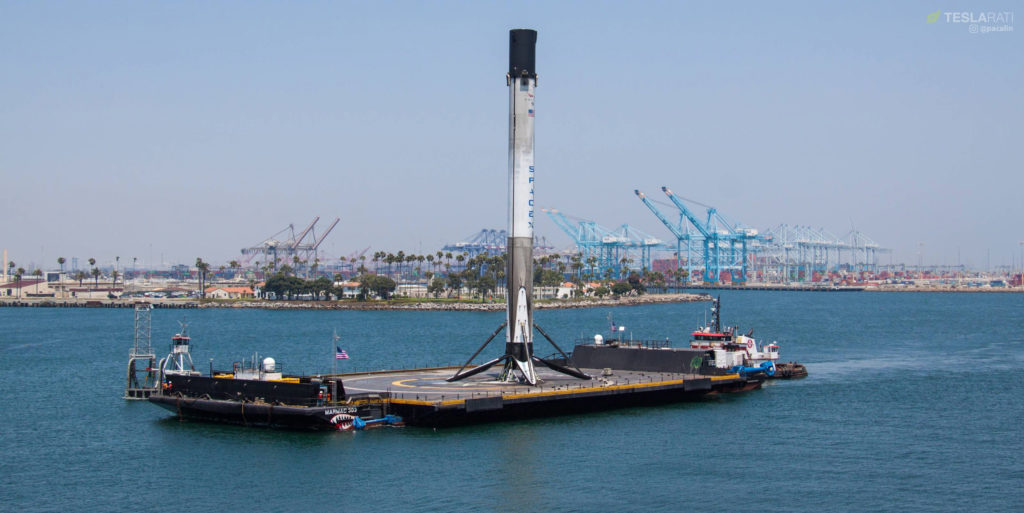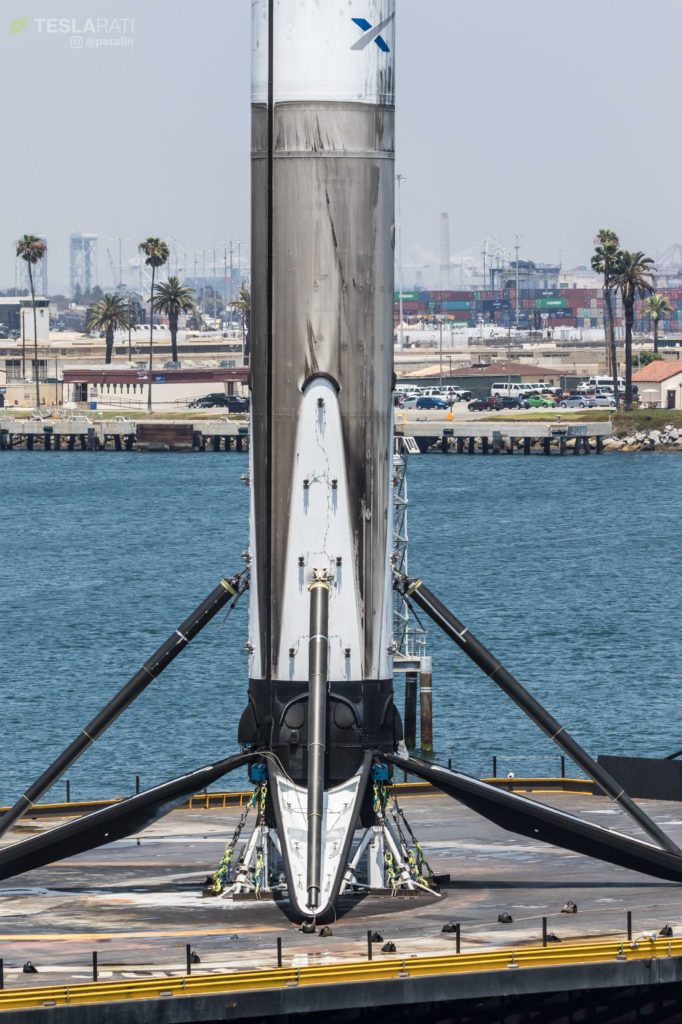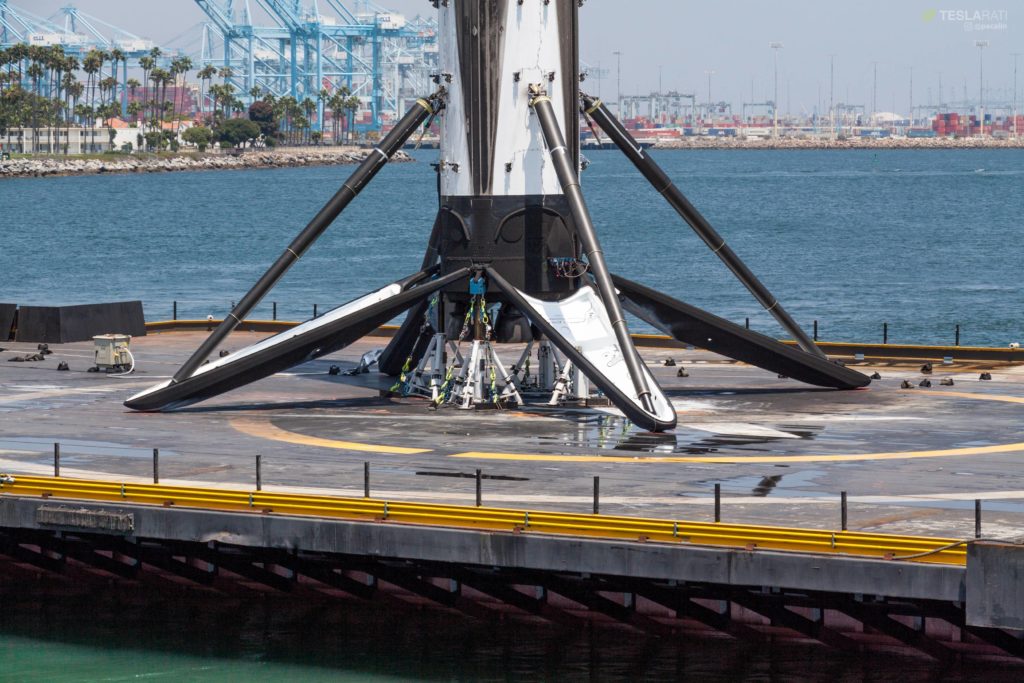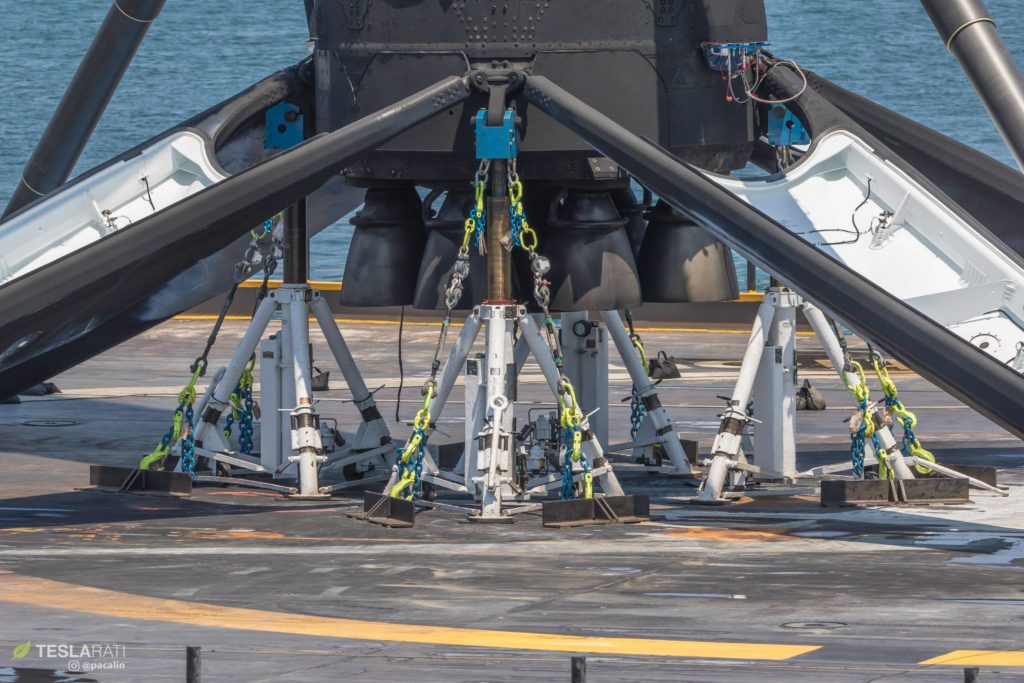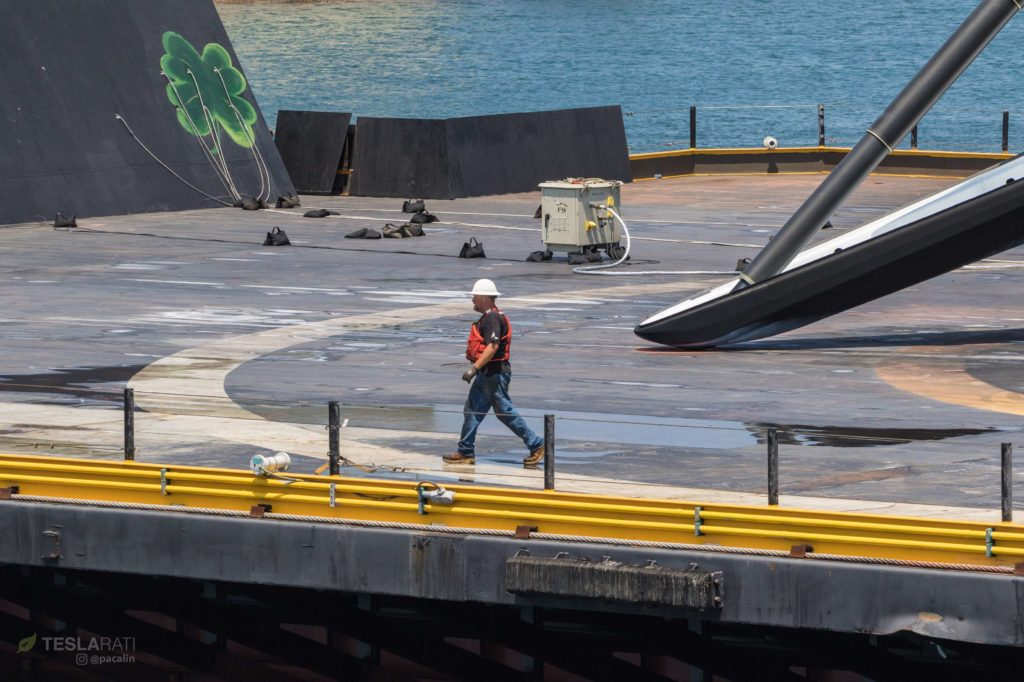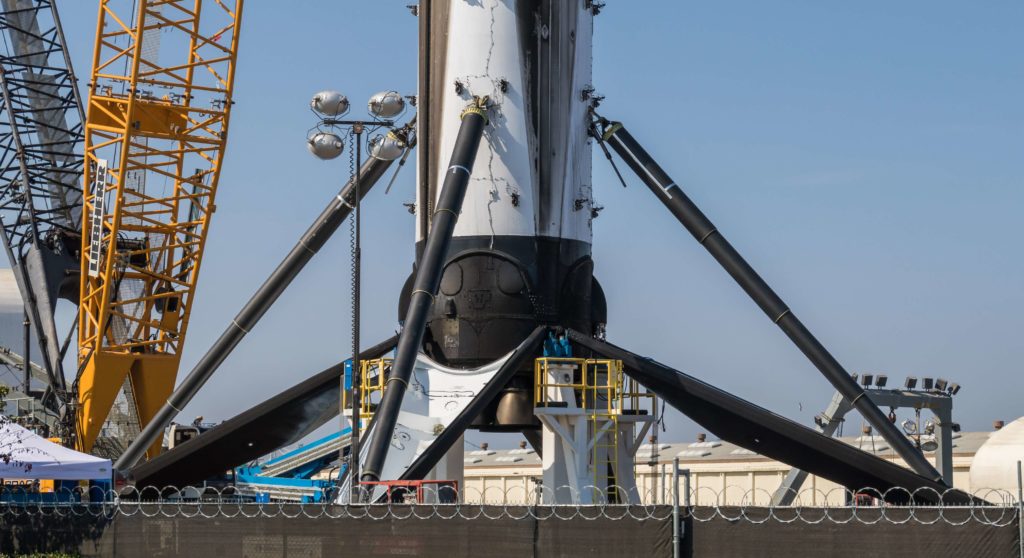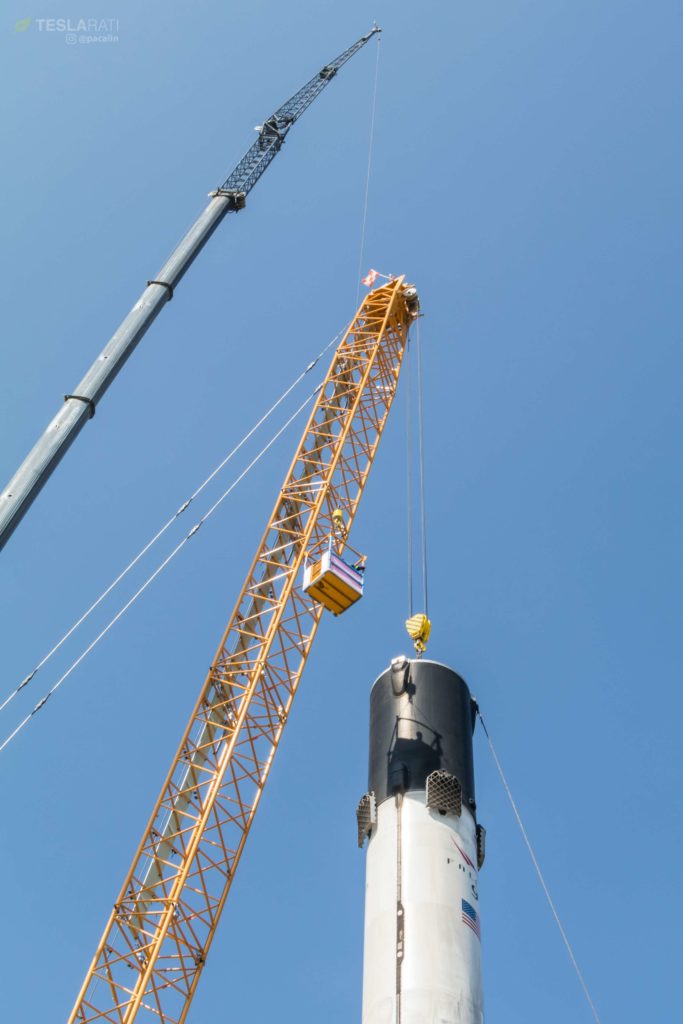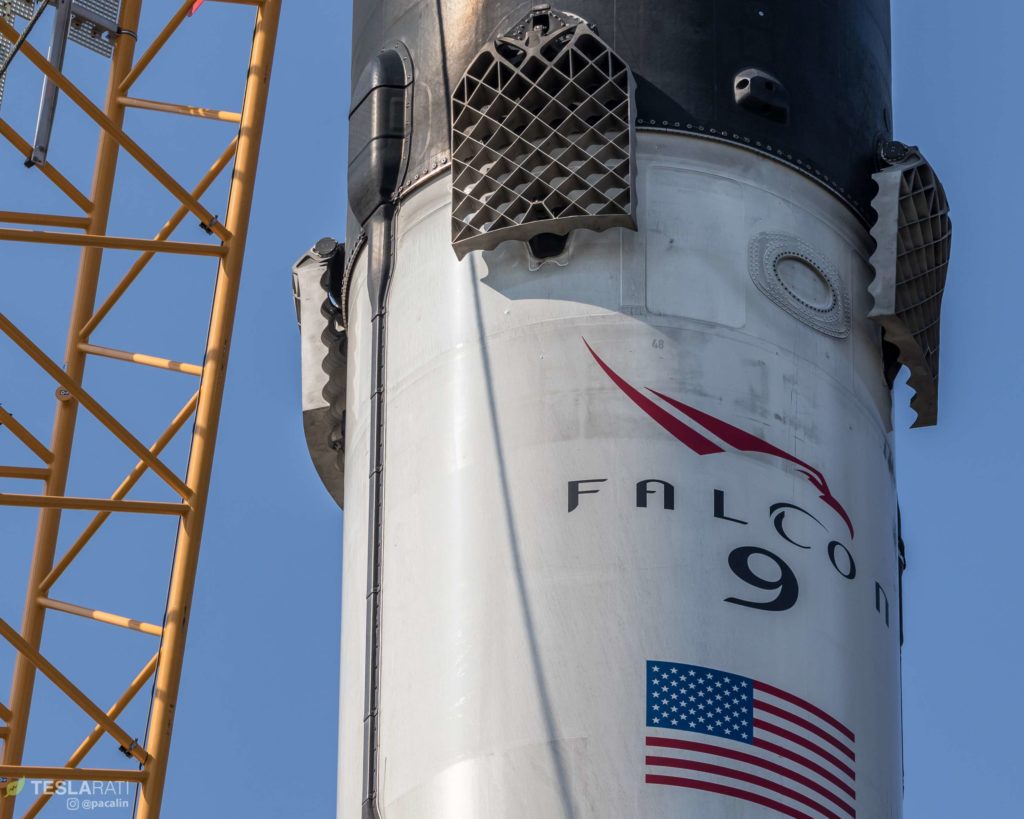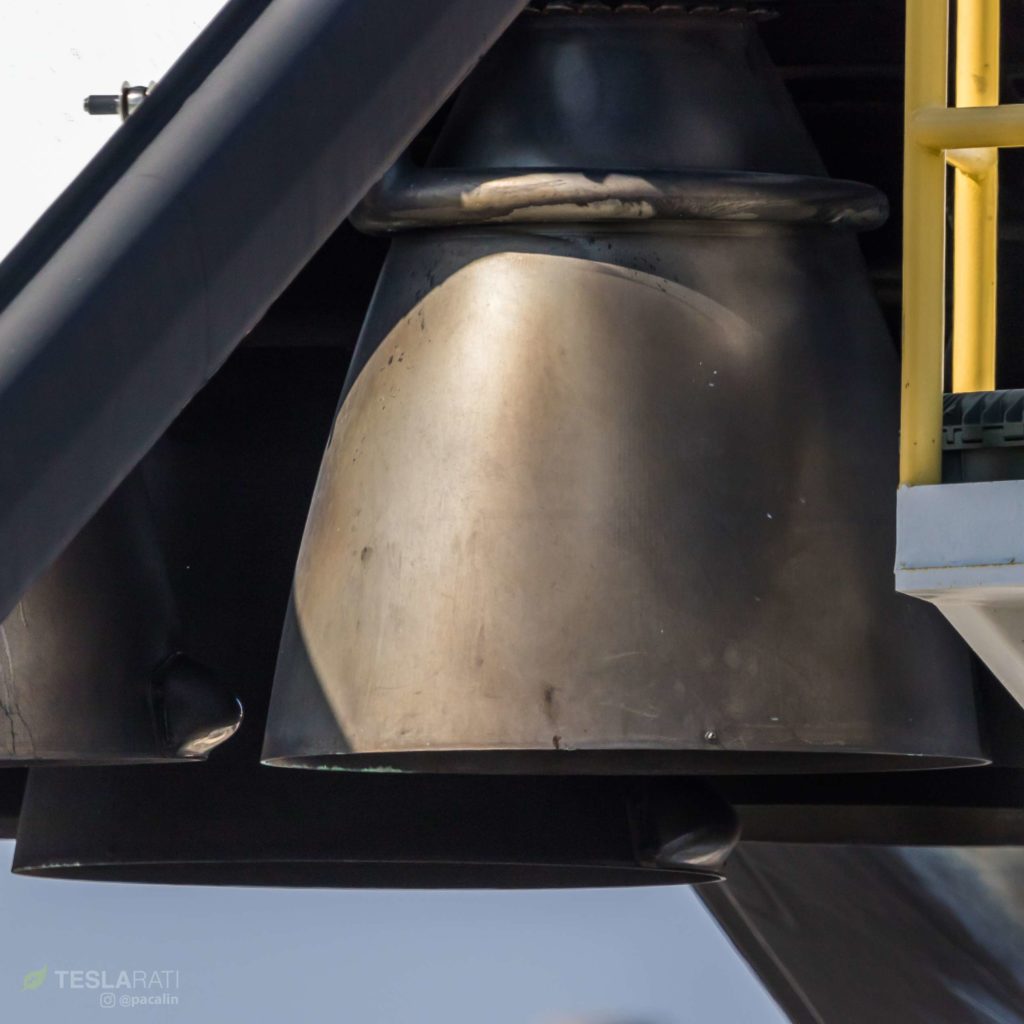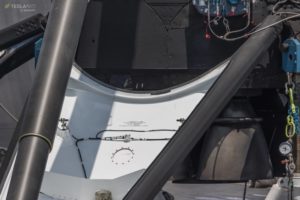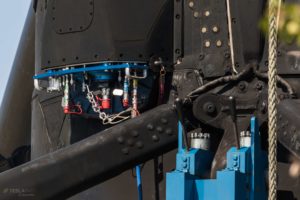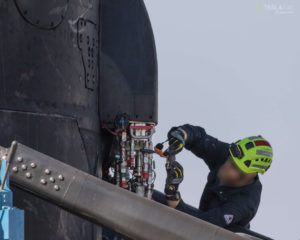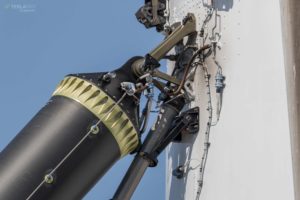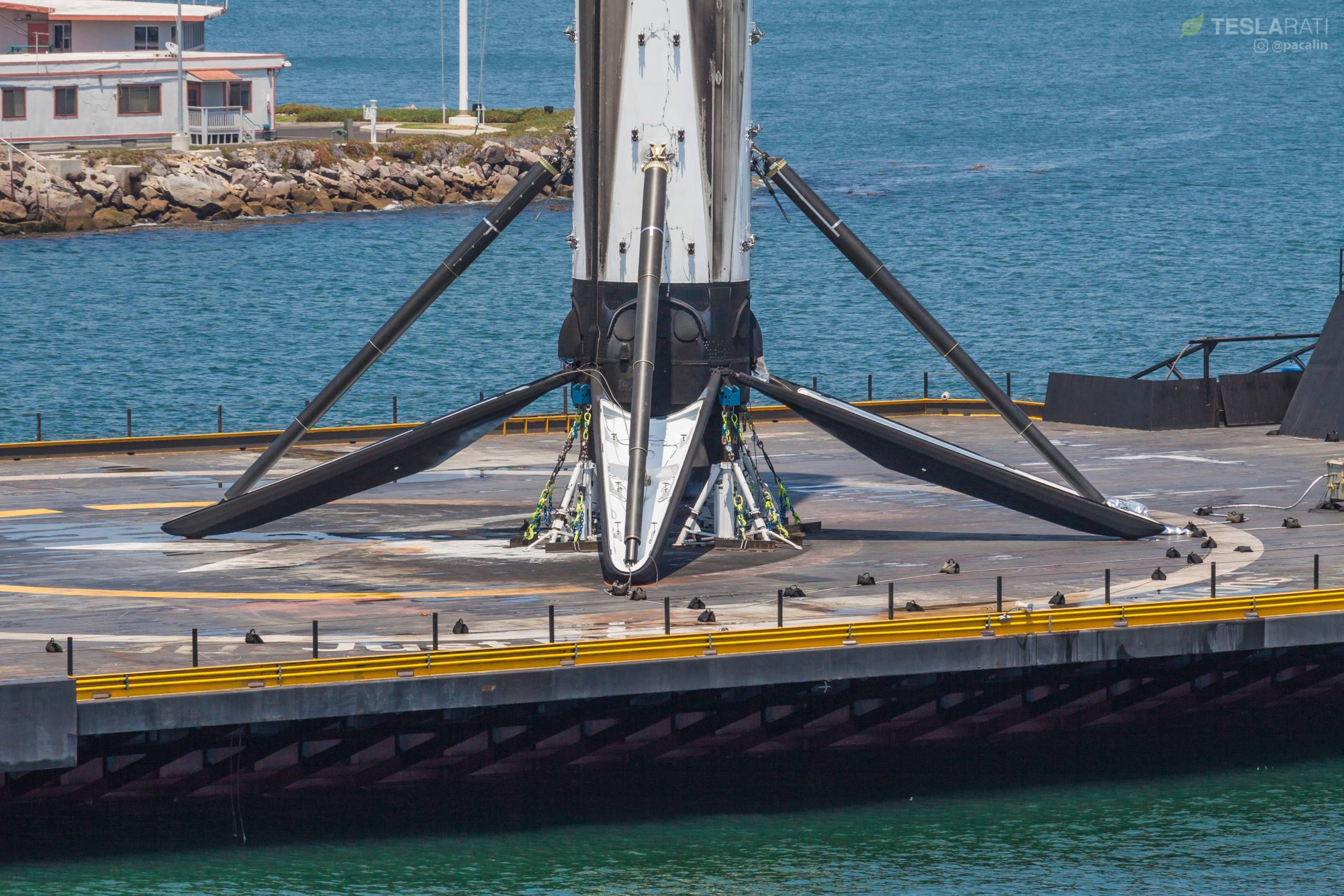
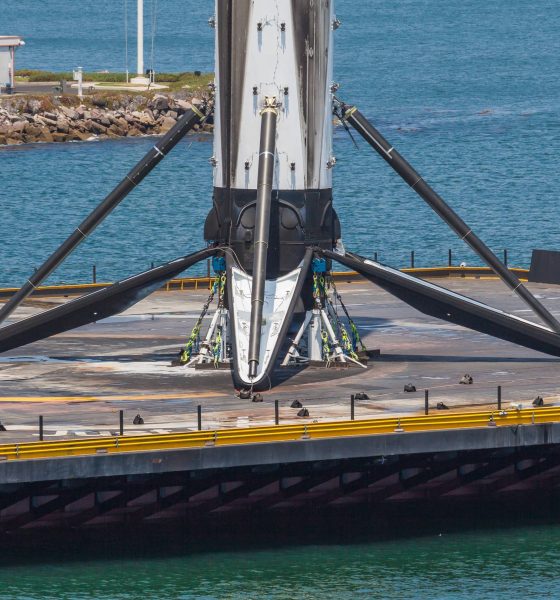
News
SpaceX Falcon 9 Block 5 rocket’s drone ship return captured in stunning detail [gallery]
Teslarati photographer Pauline Acalin has captured SpaceX’s first West Coast Falcon 9 Block 5 booster recovery in the best detail yet seen of the rocket upgrade, well-worn after its first successful launch of Iridium NEXT-7, July 25.
Iridium-7 marked a number of important debuts for SpaceX: Falcon 9 Block 5 (Booster 1048, in this case) completed its first West Coast launch from SpaceX’s Vandenberg pad, drone ship Just Read The Instructions’ (JRTI) first rocket recovery attempt and success in nearly ten months, and recovery vessel Mr Steven’s first (albeit unsuccessful) attempt at catching a Falcon fairing with a dramatically enlarged net and arms.
- B1048 returns to port on drone ship JRTI after its successful July 2019 launch debut. (Pauline Acalin)
Although inclement wind conditions foiled Mr Steven’s fairing catch effort and put pressure on Falcon 9 B1048’s journey to JRTI, Iridium-7 was flawlessly placed in orbit and Falcon 9 managed a slightly off-center but still thoroughly successful landing on the drone ship off the coast of California. With that launch and land debut on the West Coast and a second successful East Coast launch of a Block 5 rocket to the East just a few days prior, SpaceX has effectively demonstrated the basic functionality and reliability of the upgrade’s many far-reaching changes to the underlying Falcon 9 architecture.
Recovered booster 1048’s single-piece cast titanium grid fins. They were able to maneuver the vehicle through stormy winds at sea, landing it safely on Just Read the Instructions following Iridium-7 launch. #spacex #iridium7 #falcon9 pic.twitter.com/yATFVrjGjc
— Pauline Acalin (@w00ki33) July 29, 2018
Just Read The Instructions recovers a rocket
After nearly ten months largely spent berthed at SpaceX’s original Port of San Pedro dock space, drone ship JRTI has at long last returned to sea and successfully recovered a Falcon 9 booster, this time marking the West Coast launch and landing debut of the Block 5 rocket. Photos of the drone ship and rocket’s return to port were some of the best ever seen, thanks largely to the port’s layout and narrow mouth, which allowed Teslarati photographer Pauline Acalin to put giant telephoto lenses and a unique top-down perspective to good use.
Iridium NEXT-7 thankfully brought an end to the understandable but still-painful practice of intentionally expending twice-flown Falcon 9 boosters in the ocean after launch. Thanks to Iridium-7’s new Block 5 booster, B1048, expending the rocket was out of the question, as it likely will be for most Block 5 launches in the future. A combination of several expendable missions and an unfortunate duo of recovery anomalies (a small fire after Koreasat 5A and the Falcon Heavy center core landing failure) led to JRTI sitting on the sidelines since October 2017, as a considerable subset of its critical thruster hardware had to be stripped in order to keep East Coast sister ship Of Course I Still Love You (OCISLY) operational for a handful of attempts in 2018.
- Falcon 9 B1048 returns to Port of Los Angeles aboard drone ship Just Read The Instructions, July 27. (Pauline Acalin)
- Falcon 9 B1048 returned to Port of Los Angeles aboard drone ship Just Read The Instructions after its first launch. July 27. (Pauline Acalin)
- Falcon 9 B1048 returns to Port of Los Angeles aboard drone ship Just Read The Instructions, July 27. (Pauline Acalin)
- Falcon 9 B1048 returns to Port of Los Angeles aboard drone ship Just Read The Instructions, July 27. (Pauline Acalin)
- Falcon 9 B1048 returns to Port of Los Angeles aboard drone ship Just Read The Instructions, July 27. (Pauline Acalin)
Many of the months JRTI spent at berth were thus without the pod thrusters the drone ship needs to keep itself at the proper landing point once at sea. Still, JRTI departed the port with a full complement of four blue thrusters on the evening of July 22 and had a highly successful return-to-action. Sadly, it’s unclear how much SpaceX will need the vessel within just a month or two from today – after the final Iridium launch (NEXT-8) in November or December, perhaps all of SpaceX’s future Vandenberg launches will be lofting lightweight payloads that should allow the company to rely almost entirely on its brand-new rocket landing zone – conveniently colocated barely 1000 feet from the pad – for CA rocket recoveries.
F9 Block 5 shows off its upgraded exterior
Falcon 9 Block 5 booster (B1048) arrived at Port of Los Angeles on July 27 after landing at sea aboard drone ship JRTI. Photos captured by Pauline arguably show the best details yet seen of the rocket upgrade, ranging from titanium grid fins to extraordinary shots of its sooty-but-still-sorta-shiny Merlin 1D engines.
- B1048 arrives in Port of LA aboard drone ship JRTI. (Pauline Acalin)
- B1048, one launch down and dozens to come. (Pauline Acalin)
- B1048, one launch down and many more to come. (Pauline Acalin)
- B1048’s beautiful Block 5 Merlins, showing off their subtle shine despite a healthy coating of soot. (Pauline Acalin)
Myriad others provide an amazing sense of place with SpaceX technicians conducting thorough post-landing checkouts, carefully documenting the booster’s condition, and generally wrenching on a massive, orbital-class rocket that completed a suborbital jaunt to space just days prior.
Of particular note are detailed views of the silky black “highly flame-resistant felt” now covering Falcon 9’s interstage (the top segment), landing legs, octaweb section, and raceways (the black lines traveling up and down the rocket). Compared to beat-up, older Falcon 9s, B1048’s shielded components look barely worse for wear, and it would genuinely be difficult to determine if the rocket had flown before without the telltale soot fingerprint present after every Falcon 9 recovery.
- A little of everything: landing leg, octaweb, Merlin 1Ds, and drone ship JRTI. (Pauline Acalin)
- B1048’s octaweb attach points for a huge range of fluids and propellants. (Pauline Acalin)
- A SpaceX recovery technician documents one of Falcon 9 B1048’s quick-disconnect panels. (Pauline Acalin)
- One of B1048’s four upgraded landing legs. (Pauline Acalin)
- And another view of B1048’s beautifully intricate leg hardware. (Pauline Acalin)
The only mystery that still remains is what exactly Falcon 9 Block 5’s octaweb heat-shielding looks like, reportedly one of the most critical and research-intensive upgrades necessary for true rapid reusability and reliability through many, many flights. Now built largely of titanium bolted to the octaweb, among a number of other extremely heat-tolerant metals and materials and even active water-cooling in spots, the new heat-shield was designed to carry the brunt of the reentry heating Falcon 9 experiences with ease.
Perhaps we’ll get a glimpse of that yet-unseen heat-shield over the next few weeks and months. Many, many more launches to come, so stay tuned!
For prompt updates, on-the-ground perspectives, and unique glimpses of SpaceX’s rocket recovery fleet (including fairing catcher Mr Steven) check out our brand new LaunchPad and LandingZone newsletters!

News
Tesla FSD fleet is nearing 7 billion total miles, including 2.5 billion city miles
As can be seen on Tesla’s official FSD webpage, vehicles equipped with the system have now navigated over 6.99 billion miles.

Tesla’s Full Self-Driving (Supervised) fleet is closing in on almost 7 billion total miles driven, as per data posted by the company on its official FSD webpage.
These figures hint at the massive scale of data fueling Tesla’s rapid FSD improvements, which have been quite notable as of late.
FSD mileage milestones
As can be seen on Tesla’s official FSD webpage, vehicles equipped with the system have now navigated over 6.99 billion miles. Tesla owner and avid FSD tester Whole Mars Catalog also shared a screenshot indicating that from the nearly 7 billion miles traveled by the FSD fleet, more than 2.5 billion miles were driven inside cities.
City miles are particularly valuable for complex urban scenarios like unprotected turns, pedestrian interactions, and traffic lights. This is also the difference-maker for FSD, as only complex solutions, such as Waymo’s self-driving taxis, operate similarly on inner-city streets. And even then, incidents such as the San Francisco blackouts have proven challenging for sensor-rich vehicles like Waymos.
Tesla’s data edge
Tesla has a number of advantages in the autonomous vehicle sector, one of which is the size of its fleet and the number of vehicles training FSD on real-world roads. Tesla’s nearly 7 billion FSD miles then allow the company to roll out updates that make its vehicles behave like they are being driven by experienced drivers, even if they are operating on their own.
So notable are Tesla’s improvements to FSD that NVIDIA Director of Robotics Jim Fan, after experiencing FSD v14, noted that the system is the first AI that passes what he described as a “Physical Turing Test.”
“Despite knowing exactly how robot learning works, I still find it magical watching the steering wheel turn by itself. First it feels surreal, next it becomes routine. Then, like the smartphone, taking it away actively hurts. This is how humanity gets rewired and glued to god-like technologies,” Fan wrote in a post on X.
News
Tesla starts showing how FSD will change lives in Europe
Local officials tested the system on narrow country roads and were impressed by FSD’s smooth, human-like driving, with some calling the service a game-changer for everyday life in areas that are far from urban centers.

Tesla has launched Europe’s first public shuttle service using Full Self-Driving (Supervised) in the rural Eifelkreis Bitburg-Prüm region of Germany, demonstrating how the technology can restore independence and mobility for people who struggle with limited transport options.
Local officials tested the system on narrow country roads and were impressed by FSD’s smooth, human-like driving, with some calling the service a game-changer for everyday life in areas that are far from urban centers.
Officials see real impact on rural residents
Arzfeld Mayor Johannes Kuhl and District Administrator Andreas Kruppert personally tested the Tesla shuttle service. This allowed them to see just how well FSD navigated winding lanes and rural roads confidently. Kruppert said, “Autonomous driving sounds like science fiction to many, but we simply see here that it works totally well in rural regions too.” Kuhl, for his part, also noted that FSD “feels like a very experienced driver.”
The pilot complements the area’s “Citizen Bus” program, which provides on-demand rides for elderly residents who can no longer drive themselves. Tesla Europe shared a video of a demonstration of the service, highlighting how FSD gives people their freedom back, even in places where public transport is not as prevalent.
What the Ministry for Economic Affairs and Transport says
Rhineland-Palatinate’s Minister Daniela Schmitt supported the project, praising the collaboration that made this “first of its kind in Europe” possible. As per the ministry, the rural rollout for the service shows FSD’s potential beyond major cities, and it delivers tangible benefits like grocery runs, doctor visits, and social connections for isolated residents.
“Reliable and flexible mobility is especially vital in rural areas. With the launch of a shuttle service using self-driving vehicles (FSD supervised) by Tesla in the Eifelkreis Bitburg-Prüm, an innovative pilot project is now getting underway that complements local community bus services. It is the first project of its kind in Europe.
“The result is a real gain for rural mobility: greater accessibility, more flexibility and tangible benefits for everyday life. A strong signal for innovation, cooperation and future-oriented mobility beyond urban centers,” the ministry wrote in a LinkedIn post.
News
Tesla China quietly posts Robotaxi-related job listing
Tesla China is currently seeking a Low Voltage Electrical Engineer to work on circuit board design for the company’s autonomous vehicles.

Tesla has posted a new job listing in Shanghai explicitly tied to its Robotaxi program, fueling speculation that the company is preparing to launch its dedicated autonomous ride-hailing service in China.
As noted in the listing, Tesla China is currently seeking a Low Voltage Electrical Engineer to work on circuit board design for the company’s autonomous vehicles.
Robotaxi-specific role
The listing, which was shared on social media platform X by industry watcher @tslaming, suggested that Tesla China is looking to fill the role urgently. The job listing itself specifically mentions that the person hired for the role will be working on the Low Voltage Hardware team, which would design the circuit boards that would serve as the nervous system of the Robotaxi.
Key tasks for the role, as indicated in the job listing, include collaboration with PCB layout, firmware, mechanical, program management, and validation teams, among other responsibilities. The role is based in Shanghai.
China Robotaxi launch
China represents a massive potential market for robotaxis, with its dense urban centers and supportive policies in select cities. Tesla has limited permission to roll out FSD in the country, though despite this, its vehicles have been hailed as among the best in the market when it comes to autonomous features. So far, at least, it appears that China supports Tesla’s FSD and Robotaxi rollout.
This was hinted at in November, when Tesla brought the Cybercab to the 8th China International Import Expo (CIIE) in Shanghai, marking the first time that the autonomous two-seater was brought to the Asia-Pacific region. The vehicle, despite not having a release date in China, received a significant amount of interest among the event’s attendees.
